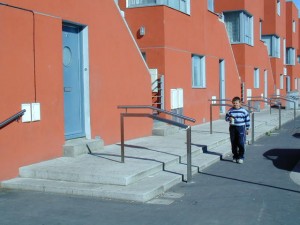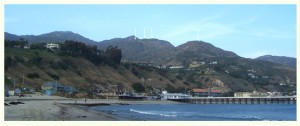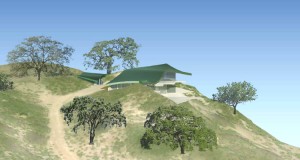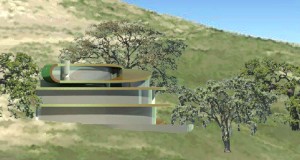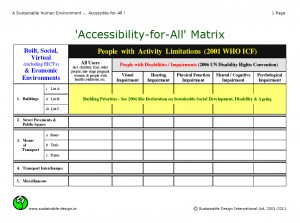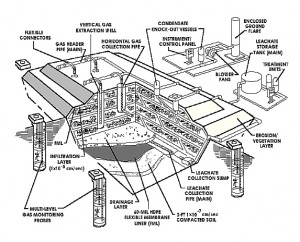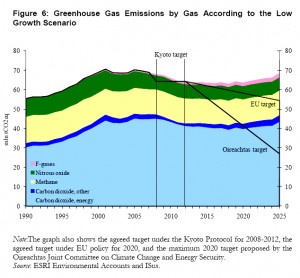2011-02-15 …
Regular visitors, here, will have very little doubt about my understanding of Sustainable Human & Social Development … which is an intricate, open, dynamic and continuously evolving concept. And about my firm conviction that Sustainable Design involves far more than merely substituting the word ‘sustainable’ … for ‘green’, ‘ecological’ or ‘environment-friendly’ … or any number of insipid alternatives which still regularly appear in the popular and/or academic media ! Who, in their right minds, wouldn’t be confused ?!?
‘Sustainability’ is Not … and Cannot … be just another graft onto Conventional Design Practice … whether that be Spatial Planning, Architectural / Engineering / Industrial Design or e-Design !
Sustainable Design & Construction … is the creative and ethical response, in resilient built or wrought (worked) form, to the concept of ‘Sustainable Human & Social Development’.
.
SUSTAINABILITY IMPLEMENTATION
Opinion: At the Heart of Implementation which is Authentically ‘Sustainable’ … (a colleague of mine is very fond of using that word ‘authentic’) … must lie a Personal Code of Ethics. By that, I do Not mean … and I am Not referring to … a Professional Code of Conduct … which is mainly about the self-protection and self-preservation of a professional class !
Everyday Reality: If we examine, for a moment, two interesting examples … Climate Change Mitigation & Adaptation or the 9-11(2001) Collapses of World Trade Center Buildings 1, 2 & 7 in New York … such is the great time-lag between general societal recognition of a critical design challenge … and then, the passing of relevant national legislation which can really only demarcate a minimal threshold of performance … and next, the associated production of standardized design guidelines … and finally, the imposition of effective monitoring and verification procedures … that the only practical approach is to base Sustainability Implementation on a robust Personal Code of Ethics … with an overt emphasis on Continuing Professional Development (CPD).
I hasten to add that this is not how we (society) are currently educating the design disciplines … and this is not how the professional institutes are operating.
.
PERSONAL CODE OF ETHICS
For many years, in my presentations around Europe, the Arab Gulf Region, India and South America … I have been actively promoting the WFEO/FMOI (UNESCO) Model Code of Ethics as a suitable template for use by all of the design-related disciplines. Recently, however, our Organization … Sustainable Design International … has undertaken a major review of this 2001 Code, and produced a 2011 Update which tackles the following matters of major concern in our world of shameful waste and social inequality:
- Sustainable Human & Social Development ;
- Climate Change Mitigation & Adaptation ;
- Strengthening the Voice of Vulnerable Social Groups, particularly People with Activity Limitations.
.
WFEO/FMOI (UNESCO)
World Federation of Engineering Organizations – Fédération Mondiale des Organisations d’Ingénieurs
MODEL CODE OF ETHICS
Since 1990, WFEO/FMOI has worked to prepare a Code of Ethics under the supervision of Donald Laplante (Canada), David Thom (New Zealand), Bud Carroll (USA), and others. It is expected that the Model Code, adopted in 2001, will be used to define and support the creation of codes in member and related professional institutions. This version of the Model Code was updated by C.J. Walsh (Ireland) in 2011.
CONTENTS
I. BROAD PRINCIPLES
II. PRACTICE PROVISION ETHICS
III. ETHICS OF SUSTAINABLE ENGINEERING
IV. CONCLUSION
INTERPRETATION OF THE CODE
- Sustainable Development & Climate Change
- Protection of the Public, and the Natural Environment
- Faithful Agent of Clients and Employers
- Competence & Knowledge
- Fairness and Integrity in the Workplace
- Professional Accountability & Leadership
.
WFEO/FMOI MODEL CODE OF ETHICS
I. BROAD PRINCIPLES
Ethics is generally understood as the discipline or field of study dealing with moral duty or obligation. This typically gives rise to a set of governing principles or values, which in turn are used to judge the appropriateness of a particular conduct or behaviour. These principles are usually presented either as broad guiding principles of an idealistic or inspirational nature or, alternatively, as a detailed and specific set of rules couched in legalistic or imperative terms to make them more enforceable. Professions which have been given the privilege and responsibility of self regulation, including the engineering professions, have tended to opt for the first alternative, espousing sets of underlying principles as codes of professional ethics which form the basis and framework for responsible professional practice. Arising from this context, professional codes of ethics have sometimes been incorrectly interpreted as a set of ‘rules’ of conduct intended for passive observance. A more appropriate use by practicing professionals is to interpret the essence of the underlying principles within their daily decision-making situations in a dynamic manner, responsive to the needs of the situation. As a consequence, a code of professional ethics is more than a minimum standard of conduct ; rather, it is a set of principles which should guide professionals in their daily work.
In summary, the Model Code presented herein elaborates the expectations of engineers and society in discriminating engineers’ professional responsibilities. The Code is based on broad principles of truth, honesty and trustworthiness, respect for human life and social wellbeing, fairness, openness, competence and accountability. Some of these broader ethical principles or issues deemed more universally applicable are not specifically defined in the Code, although they are understood to be applicable as well. Only those tenets deemed to be particularly applicable to the practice of professional engineering are specified. Nevertheless, certain ethical principles or issues not commonly considered to be part of professional ethics should be implicitly accepted to judge the engineer’s professional performance.
Issues regarding protection of the natural environment, climate change mitigation and adaptation, and sustainable development know no geographical boundaries. The engineers and citizens of all nations should know and respect the ethics of sustainability. It is desirable, therefore, that engineers in each nation continue to observe the philosophy of the Principles of Sustainable Ethics, as delineated in Section III of this code.
II. PRACTICE PROVISION ETHICS
Professional engineers shall:
- hold paramount the safety, health and wellbeing of the public, particularly people with activity limitations, indigenous peoples and other vulnerable groups in society … and the protection of both the natural and the built environments in accordance with the Principles of Sustainable Human & Social Development ;
- promote health and safety within the workplace ;
- offer services, advise on or undertake engineering assignments only in areas of their competence, and practice in a careful and diligent manner ;
- act as faithful agents of their clients or employers, maintain confidentially and disclose conflicts of interest ;
- keep themselves informed in order to maintain their competence, strive to advance the body of knowledge within which they practice and provide opportunities for the professional development of their subordinates and fellow practitioners ;
- conduct themselves with fairness, and good faith towards clients, colleagues and others, give credit where it is due and accept, as well as give, honest and fair professional criticism ;
- be aware of and ensure that clients and employers are made aware of the environmental and socio-economic consequences of actions or projects, and endeavour to interpret engineering issues to the public in an objective and truthful manner ;
- present clearly to employers and clients the possible consequences of overruling or disregarding engineering decisions or judgment ;
- report to their association and/or appropriate agencies any illegal or unethical engineering decisions or practices of engineers or others.
III. ETHICS OF SUSTAINABLE ENGINEERING
Engineers, as they develop any professional activity, shall:
- try with the best of their ability, courage, enthusiasm and dedication, to obtain a superior technical achievement, which will contribute to and promote a healthy and agreeable surrounding for all people, including indigenous peoples and other vulnerable social groups, in open spaces as well as indoors ;
- strive to accomplish the beneficial objectives of their work with the lowest possible consumption of raw materials and energy and the lowest production of wastes and any kind of pollution ;
- discuss in particular the consequences of their proposals and actions, direct or indirect, immediate or long term, upon human health, social equity and the local culture and system of values ;
- study thoroughly the environment that will be affected, assess all the impacts that might arise in the structure, dynamics and aesthetics of the eco-systems involved, urbanized or natural, as well as in the pertinent socio-economic systems … and select the best alternative for development which is environmentally sound, resilient to climate change and sustainable ;
- promote a clear understanding of the actions required to restore and, if possible, to improve the environment that may be disturbed, and include them in their proposals ;
- reject any kind of commitment that involves unfair damages for human surroundings and nature, and aim for the best possible technical, socio-economic, and political solution ;
- be aware that the principles of eco-system interdependence, biodiversity maintenance, resource recovery and inter-relational harmony form the basis of humankind’s continued existence and that each of these bases poses a threshold of sustainability that should not be exceeded.
IV. CONCLUSION
Always remember that war, greed, misery and ignorance, plus natural disasters and human-induced pollution, climate change and destruction of resources, are the main causes for the progressive impairment of the environment and that engineers, as active members of society, deeply involved in the promotion of development, must use our talent, knowledge and imagination to assist society in removing those evils and improving the quality of life for all people, including indigenous peoples and other vulnerable groups.
.
INTERPRETATION OF THE WFEO/FMOI MODEL CODE
The interpretive articles which follow expand on and discuss some of the more difficult and inter-related components of the Code, especially with regard to the Practice Provisions. No attempt is made to expand on all clauses of the Code, nor is the elaboration presented on a clause-by-clause basis. The objective of this approach is to broaden the interpretation, rather than narrow its focus. The ethics of professional engineering is an integrated whole and cannot be reduced to fixed ‘rules’. Therefore, the issues and questions arising from the Code are discussed in a general framework, drawing on any and all portions of the Code to demonstrate their inter-relationship and to expand on the basic intent of the Code.
Sustainable Development & Climate Change
Engineers shall strive to enhance the quality, durability and climate change resilience of the Human Environment (including the built, social, economic and virtual environments), and to promote the Principles of Sustainable Human & Social Development.
Engineers shall seek opportunities to work for the enhancement of safety, health, and the social wellbeing of both their local community and the global community through the practice of sustainable development.
Engineers whose recommendations are overruled or ignored on issues of safety, health, social wellbeing, or sustainable development, shall inform their contractor or employer of the possible consequences.
Protection of the Public, and the Natural Environment
Professional Engineers shall hold paramount the safety, health and wellbeing of the public, including people with activity limitations, indigenous peoples and other vulnerable groups in society … and protection of the natural environment. This obligation to the safety, health and wellbeing of the general public, which includes his/her own work environment, is often dependent upon engineering judgments, risk assessments, decisions and practices incorporated into structures, machines, products, processes and devices. Therefore, engineers must control and ensure that what they are involved with is in conformity with accepted engineering practices, standards and applicable codes, and would be considered safe based on peer adjudication. This responsibility extends to include all and any situations which an engineer encounters, and includes an obligation to advise the appropriate authority if there is reason to believe that any engineering activity, or its products, processes, etc., do not conform with the above stated conditions.
The meaning of paramount in this basic tenet is that all other requirements of the Code are subordinate, if protection of public safety, the natural environment or other substantive public interests are involved.
Faithful Agent of Clients and Employers
Engineers shall act as faithful agents or trustees of their clients and employers with objectivity, fairness and justice to all parties. With respect to the handling of confidential or proprietary information, the concept of ownership of the information and protecting that party’s rights is appropriate. Engineers shall not reveal facts, data or information obtained in a professional capacity without the prior consent of its owner. The only exception to respecting confidentially and maintaining a trustee’s position is in instances where the public interest or the natural environment is at risk, as discussed in the preceding section ; but even in these circumstances, the engineer should endeavour to have the client and/or employer appropriately redress the situation, or at least, in the absence of a compelling reason to the contrary, should make every reasonable effort to contact them and explain clearly the potential risks, prior to informing the appropriate authority.
Professional Engineers shall avoid conflict of interest situations with employers and clients but, should such conflict arise, it is the engineer’s responsibility to fully disclose, without delay, the nature of the conflict to the party/parties with whom the conflict exists. In those circumstances where full disclosure is insufficient, or seen to be insufficient, to protect all parties’ interests, as well as the public, the engineer shall withdraw totally from the issue or use extraordinary means, involving independent parties if possible, to monitor the situation. For example, it is inappropriate to act simultaneously as agent for both the provider and the recipient of professional services. If a client’s and an employer’s interests are at odds, the engineer shall attempt to deal fairly with both. If the conflict of interest is between the intent of a corporate employer and a regulatory standard, the engineer must attempt to reconcile the difference, and if that is unsuccessful, it may become necessary to inform his/her association and the appropriate regulatory agency.
Being a faithful agent or trustee includes the obligation of engaging, or advising to engage, experts or specialists when such services are deemed to be in the client’s or employer’s best interests. It also means being accurate, objective and truthful in making public statements on behalf of the client or employer when required to do so, while respecting the client’s and employer’s rights of confidentiality and proprietary information.
Being a faithful agent includes not using a previous employer’s or client’s specific privileged or proprietary information and trade practices or process information, without the owner’s knowledge and consent. However, general technical knowledge, experience and expertise gained by the engineer through involvement with the previous work may be freely used without consent or subsequent undertakings.
Competence & Knowledge
Professional Engineers shall offer services, advise on or undertake engineering assignments only in areas of their competence by virtue of their training and experience. This includes exercising care and communicating clearly in accepting or interpreting assignments, and in setting expected outcomes. It also includes the responsibility to obtain the services of an expert if required or, if the knowledge is unknown, to proceed only with full disclosure of the circumstances and, if necessary, of the experimental nature of the activity to all parties involved. Hence, this requirement is more than simply duty to a standard of care, it also involves acting with honesty and integrity with one’s client or employer, and one’s self. Professional Engineers have the responsibility to remain abreast of developments and knowledge in their area of expertise, that is, to maintain their own competence. Should there be a technologically driven or individually motivated shift in the area of technical activity, it is the engineer’s duty to attain and maintain competence in all areas of involvement including being knowledgeable with the technical and legal framework and regulations governing their work. In effect, it requires a personal commitment to ongoing professional development, continuing education and self-testing.
In addition to maintaining their own competence, Professional Engineers have an obligation to strive to contribute to the advancement of the body of knowledge within which they practice, and to the profession in general. Moreover, within the framework of the practice of their profession, they are expected to participate in providing opportunities to further the professional development of their colleagues.
This competence requirement of the Code extends to include an obligation to the public, the profession and one’s peers, that opinions on engineering issues are expressed honestly and only in areas of one’s competence. It applies equally to reporting or advising on professional matters and to issuing public statements. This requires honesty with one’s self to present issues fairly, accurately and with appropriate qualifiers and disclaimers, and to avoid personal, political and other non-technical biases. The latter is particularly important for public statements or when involved in a technical forum.
Fairness and Integrity in the Workplace
Honesty, integrity, continuously updated competence, devotion to service and dedication to enhancing the life quality of society are cornerstones of professional responsibility. Within this framework, engineers shall be objective and truthful and include all known and pertinent information in professional reports, statements and testimony. They shall accurately and objectively represent their clients, employers, associates and themselves, consistent with their academic experience and professional qualifications. This tenet is more than ‘not misrepresenting’ ; it also implies disclosure of all relevant information and issues, especially when serving in an advisory capacity or as an expert witness. Similarly, fairness, honesty and accuracy in advertising are expected.
If called upon to verify another engineer’s work, there is an obligation to inform (or make every effort to inform) the other engineer, whether the other engineer is still actively involved or not. In this situation, and in any circumstance, engineers shall give proper recognition and credit where credit is due and accept, as well as give, honest and fair criticism on professional matters, all the while maintaining dignity and respect for everyone involved.
Engineers shall not accept, nor offer covert payment or other considerations for the purpose of securing, or as remuneration for, engineering assignments. Engineers should prevent their personal or political involvement from influencing or compromising their professional role or responsibility.
Consistent with the Code, and having attempted to remedy any situation within their organization, engineers are obligated to report to their association or other appropriate agency any illegal or unethical engineering decisions by engineers or others. Care must be taken not to enter into legal arrangements which compromise this obligation.
Professional Accountability & Leadership
Engineers have a duty to practice in a careful and diligent manner, and accept responsibility and be accountable for their actions. This duty is not limited to design, or its supervision and management, but applies to all areas of practice. For example, it includes construction supervision and management, preparation of drawings, engineering reports, feasibility studies, sustainability impact assessments, engineering developmental work, etc.
The signing and sealing of engineering documents indicates the taking of responsibility for the work. This practice is required for all types of engineering endeavour, regardless of where or for whom the work is done, including but not limited to, privately and publicly owned firms, large corporations, and government agencies or departments. There are no exceptions ; signing and sealing documents is appropriate whenever engineering principles have been used and public wellbeing may be at risk.
Taking responsibility for engineering activity includes being accountable for one’s own work and, in the case of a senior engineer, accepting responsibility for the work of a team. The latter implies responsible supervision where the engineer is actually in a position to review, modify and direct the entirety of the engineering work. This concept requires setting reasonable limits on the extent of activities, and the number of engineers and others, whose work can be supervised by the responsible engineer. The practice of a ‘symbolic’ responsibility or supervision is the situation where an engineer, say with the title of Chief Engineer, takes full responsibility for all engineering on behalf of a large corporation, utility or governmental agency, even though the engineer may not be aware of many of the engineering activities or decisions being made daily throughout the firm or agency. The essence of this approach is that the firm is taking the responsibility by default, whether engineering supervision or direction is applied or not.
Engineers have a duty to advise their employer and, if necessary, their clients and even their professional association, in that order, in situations when the overturning of an engineering decision may result in breaching their duty to safeguard the public, including people with activity limitations, indigenous peoples and other vulnerable social groups. The initial action is to discuss the problem with the supervisor/employer. If the employer does not adequately respond to the engineer’s concern, then the client must be advised in the case of a consultancy situation, or the most senior officer should be informed in the case of a manufacturing process plant or government agency. Failing this attempt to rectify the situation, the engineer must advise in confidence his/her professional association of his/her concerns.
In the same order as mentioned above, the engineer must report unethical engineering activity undertaken by other engineers, or by non-engineers. This extends to include, for example, situations in which senior officials of a firm make ‘executive’ decisions which clearly and substantially alter the engineering aspects of the work, or protection of public wellbeing or the natural environment arising from that work.
Because of developments in technology and the increasing ability of engineering activities to impact on the environment, engineers have an obligation to be mindful of the effect that their decisions will have on the environment and the wellbeing of society, and to report any concerns of this nature in the same manner as previously mentioned. Further to the above, with the rapid advancement of technology in today’s world and the possible social impacts on large populations of people, engineers must endeavour to foster the public’s understanding of technical issues and the role of Engineering more than ever before.
Sustainable development is the challenge of meeting current human needs for natural resources, industrial products, energy, food, transportation, shelter, and effective waste management while conserving and, if possible enhancing, the Earth’s environmental quality, natural resources, ethical, intellectual, working and affectionate capabilities of people and the socio-economic bases essential for the human needs of future generations. The proper observance of these principles will considerably help to eradicate world poverty.
.
WFEO/FMOI Model Code of Ethics, Adopted 2001.
This Version, Updated 2011 & Communicated to UNESCO.
[Footnote to the Code]
Sustainable Human & Social Development: Development which meets the responsible needs, i.e. the Human & Social Rights*, of this generation – without stealing the life and living resources from future generations, especially our children, their children, and the next five generations of children.
*As defined in the 1948 Universal Declaration of Human Rights
.
.
END

